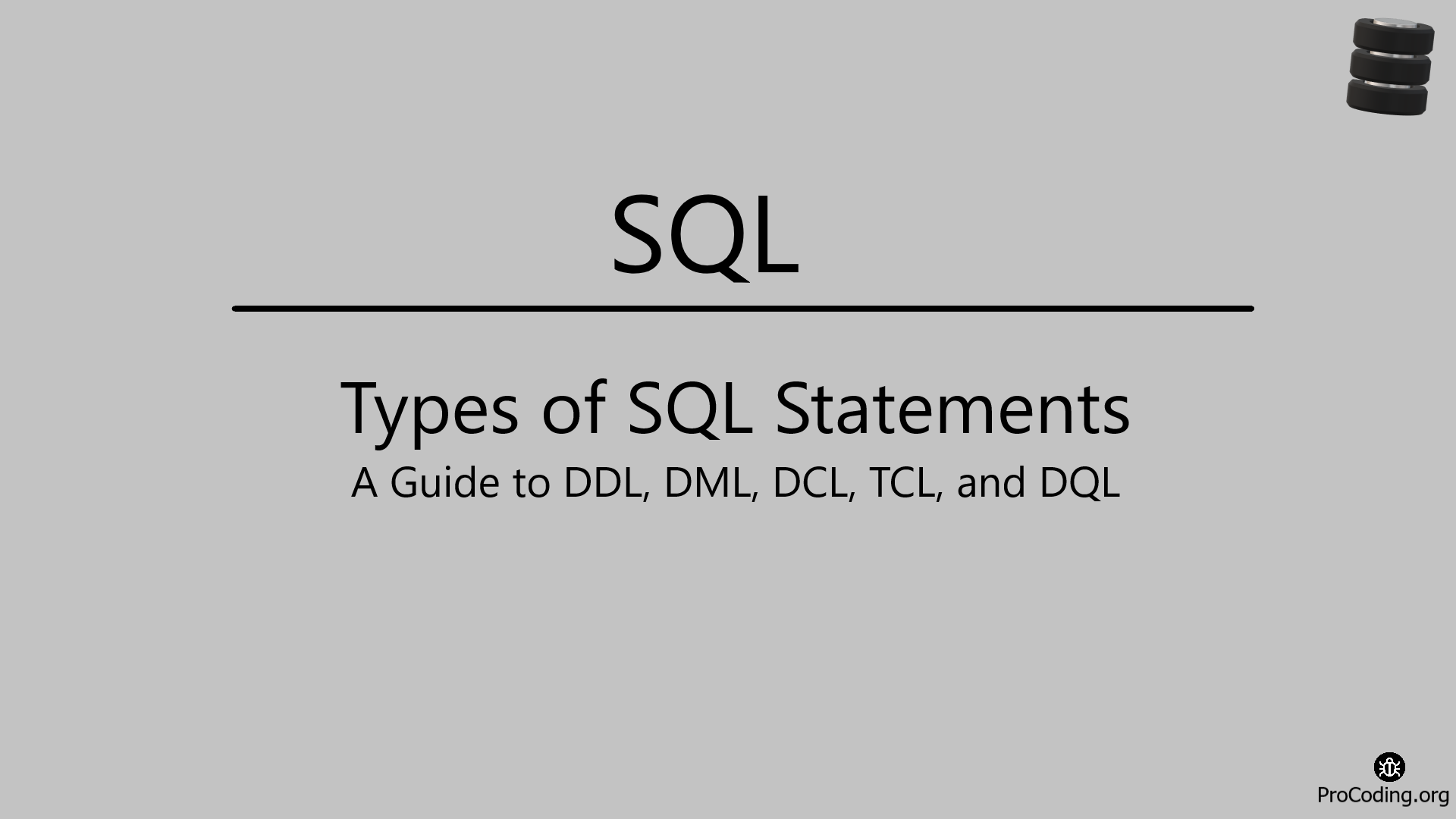Types of SQL Statements: A Guide to DDL, DML, DCL, TCL, and DQL
In this comprehensive guide, we break down Data Definition Language (DDL), Data Manipulation Language (DML), Data Control Language (DCL), Transaction Control Language (TCL), and Data Query Language (DQL), providing you with the knowledge to navigate the complexities of SQL with confidence.

Structured Query Language (SQL) is a powerful tool for managing relational databases.SQL statements are categorized into different types, each serving a specific purpose in database operations.
In this article, we'll explore the five main categories of SQL statements:
- Data Definition Language (DDL)
- Data Manipulation Language (DML)
- Data Control Language (DCL)
- Transaction Control Language (TCL)
- Data Query Language (DQL)
1. Data Definition Language (DDL)
DDL statements are used to define and manage the structure of the database objects. They focus on creating, altering, and deleting database structures such as tables, indexes, and constraints. DDL statements are vital in establishing the foundation of a database.
Common DDL Statements:
CREATE: Creates new database objects like tables, indexes, and views.
ALTER: Modifies the structure of existing database objects.
DROP: Deletes existing database objects.
TRUNCATE: Removes all data from a table while maintaining the structure.
2. Data Manipulation Language (DML)
DML statements enable interaction with the data stored in the database. They are used to insert, update, retrieve, and delete data within the tables.
Common DML Statements:
SELECT: Retrieves data from one or more tables.
INSERT: Adds new rows of data into a table.
UPDATE: Modifies existing data in a table.
DELETE: Removes rows of data from a table.
3. Data Control Language (DCL)
DCL statements are concerned with granting and revoking permissions to users and roles. They ensure data security and manage access to the database.
Common DCL Statements:
GRANT: Provides specific privileges to users or roles.
REVOKE: Removes privileges from users or roles.
4. Transaction Control Language (TCL)
TCL statements manage transactions within a database. A transaction is a sequence of one or more SQL statements that are executed as a single unit of work.
Common TCL Statements:
COMMIT: Saves all the changes made during the current transaction.
ROLLBACK: Undoes changes made during the current transaction.
SAVEPOINT: Sets a point within a transaction to which you can later roll back.
SET TRANSACTION: Sets properties for a transaction, such as isolation level.
5. Data Query Language (DQL)
DQL statements focus on querying and retrieving data from the database. The primary DQL statement is the SELECT statement.
Common DQL Statement:
SELECT: Retrieves data from one or more tables based on specified conditions.
Conclusion
SQL statements are the building blocks of database operations. By understanding the different categories of SQL statements – DDL, DML, DCL, TCL, and DQL – you gain the ability to create, modify, control access, manage transactions, and retrieve data effectively. As you work with databases, mastering these categories will empower you to manage data efficiently and make the most of your database system.